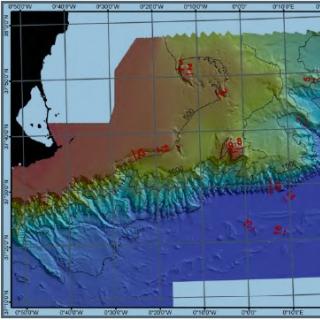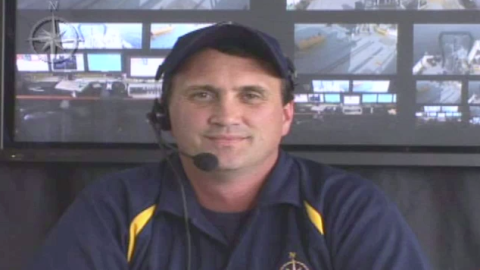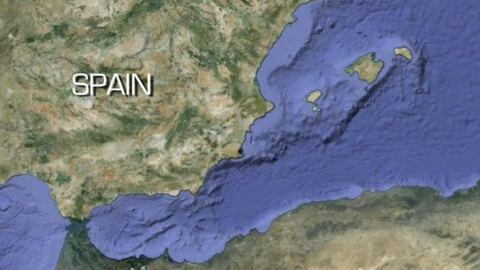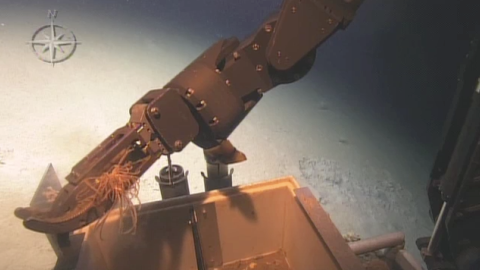The Control Van
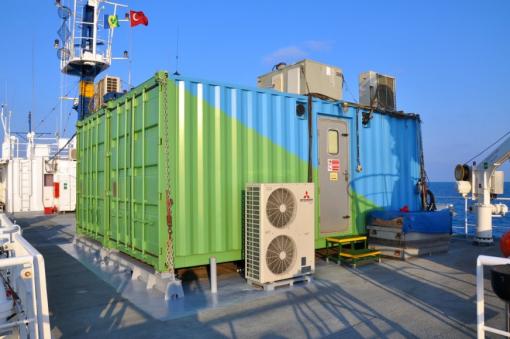
There are many interesting places to be while aboard Nautilus, but by far the most interesting place to be during a dive is the control van—the mission control room for operations taking place under the sea. Here is your guide to understanding what happens in the control van.
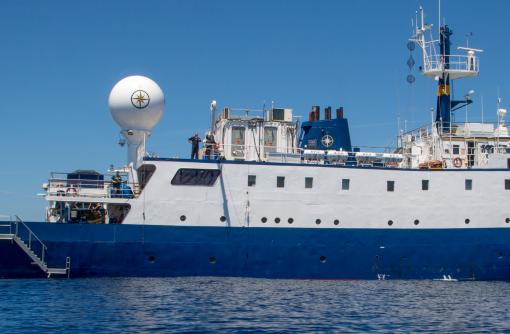
The control van is actually two 20-foot shipping containers stacked side-by-side on the bridge deck of Nautilus. The containers are built out internally to house the electronic control systems for the ROVs and all of the connection equipment for the live satellite feed. Seated in front of all of this equipment are the crew members that fill the eight watch positions in the van.
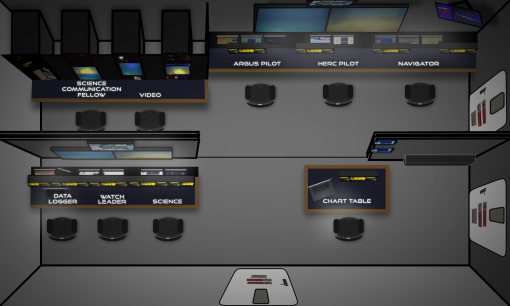
Control Van Layout
In the front corner of the control van sits the Science Communication Fellow. This formal or informal educator works to bring the operational conversation of exploration out to the world over the live video feed on www.Nautiluslive.org. Aside from helping explain what viewers are seeing, Science Communication Fellows field questions from the website and engage schools, museums, research facilities, and public audiences who explore along with the team.
In the video seat sits the Video Engineer or SEIP Video Engineering Intern, orchestrating dozens of video feeds going from cameras around the ship, to screens in the control van, and out to the world broadcasting from the satellite. Video engineers also control the iris, zoom and focus of the HD cameras on ROV Hercules and Argus, at the request of the pilots and watch leader.
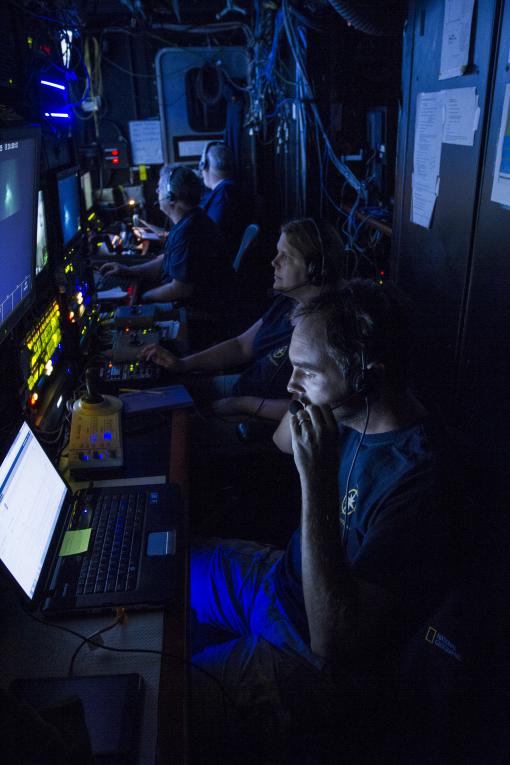
The view toward the pilots from the Science Communication Fellow and Video Engineer seats
Argus is the ROV Argus pilot or ROV Engineering Intern. Argus flies above and behind Hercules to provide a good view of the exploration site, act as a shock absorber for the ship's heave, and light the seafloor around Hercules. The Argus pilot has to constantly maneuver to be in a good position between the ship and Hercules. The computers in front of the Argus pilot can also be used to control systems on board either vehicle, so the Argus pilot can help the Hercules pilot during sampling or other tricky operations.
Hercules is our most prized tool for deep sea exploration and the Hercules pilot sits front and center in the control van's front row. The Hercules pilot is one of the busiest people in the control van, keeping Hercules flying at a safe altitude (or height) above the seafloor while monitoring the many systems and sensors on the ROV. The Herc pilot stays in constant communication with the Argus pilot and Navigator about the vehicle positions, while also taking instructions from the Watch Leader about where to explore with Hercules.
The Navigator sits to the Hercules Pilot's right side. Their position is to act as the liaison between the ship's bridge officers and the exploration team within the control van. Even though the control van has no windows, the navigator keeps constant situational awareness during dives. Navigators call for special moves adjusting the ship's heading or position using the dynamic position system. The navigator usually tries to keep the ship on a predetermined "line" across an area of interest, but must be ready to stop or make detours if Hercules comes across interesting features on the seafloor.
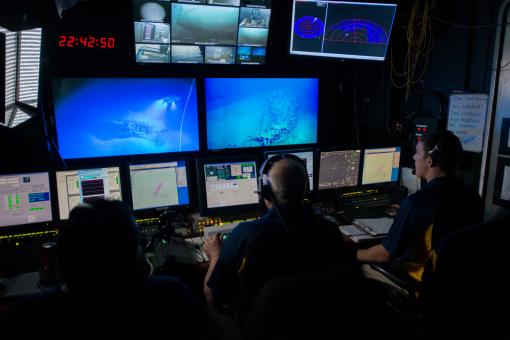
The pilots' stations. From left: Argus, Hercules, and Navigator
The Watch Leader directs the Corps of Exploration and the ROVs in their exploration. Together with the rest of the science team, the Watch Leader decides what to examine on the seafloor and how long to spend in any given area. The Lead Scientist and Watch Leaders work as a team to direct the progress of the exploration cruise. Like a captain on a sports team, Watch Leaders ensure everyone is working well together, communicating efficiently, and including all ashore and at-sea participants in the operations.
The Science seat is for a second scientist on watch. In order to cover the breadth of what our team may discover, this person often has a different specialty than the Watch Leader. For example, one scientist may be a geologist while the other is a biologist, archaeologist, or imaging specialist. Together, the two science positions coordinate the exploration to make the most of the dive.
The Data Logger position is manned by scientists or an Ocean Science Intern. The data logger records the significant events and sightings on a dive, with detailed location and depth information. Data helps maintain the log of all sampling sites for scientists to later reference in the lab or for reporting to permitting agencies. Data loggers also work with computer systems to ensure all the ROV sensors are functioning well and sensor data is being saved accurately in the file system.
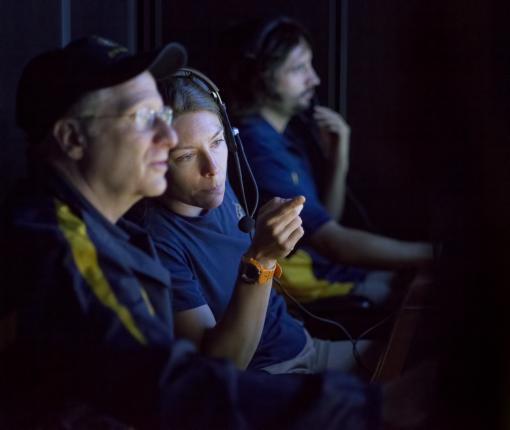
The science row. From front: Science, Watch Leader, and Data Logger.
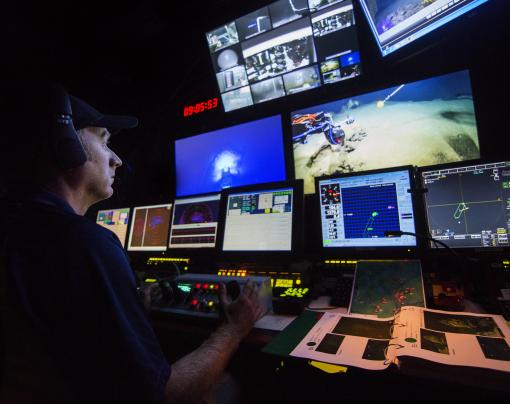
Hercules Pilot Josh Chernov operates the ROV from the front row of the control van
When a dive is in progress, all eight of these crew members work together as a highly-coordinated team. No single person can complete their job without communicating and working well with others. Although the exploration discoveries may be on the seafloor, the activity in the control van is often just as amazing to watch.
